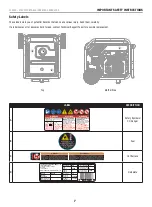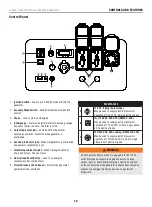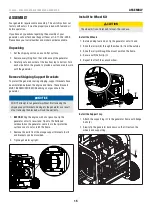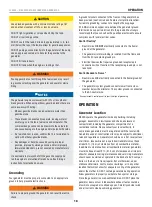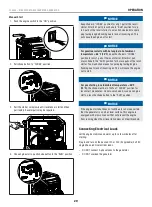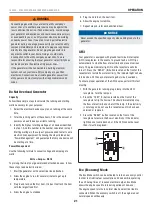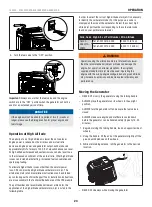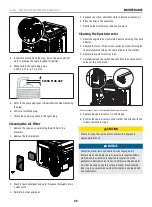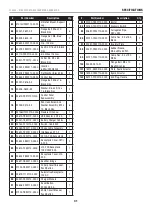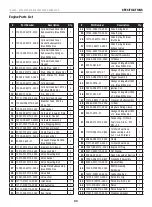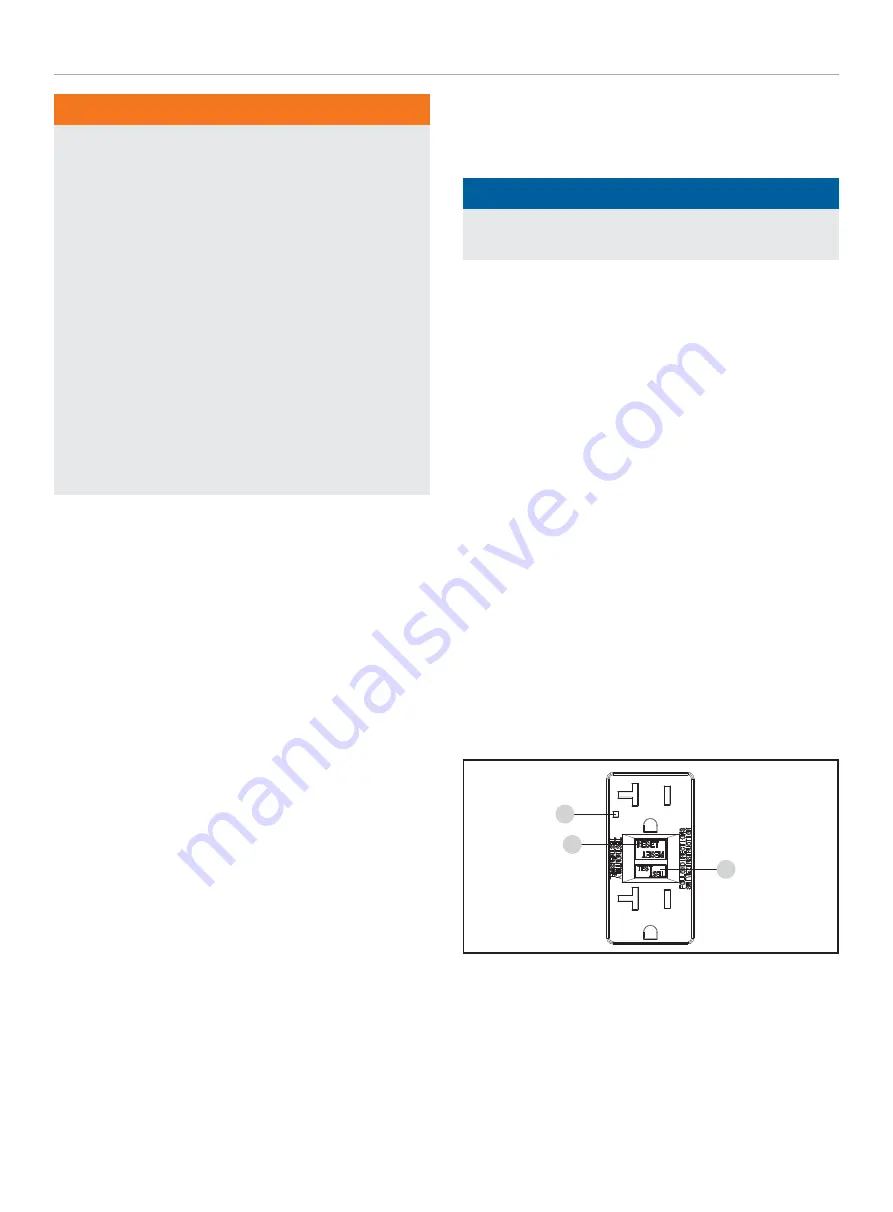
100520 - 8750W PORTABLE INVERTER GENERATOR
OPERATION
21
WARNING
Connecting a generator to your electric utility company’s
power lines or to another power source may be against the
law. In addition this action, if done incorrectly, could damage
your generator and appliances and could cause serious injury
or even death to you or a utility worker who may be working
on nearby power lines. If you plan to run a portable electric
generator during an outage, please notify your electric utility
company immediately and remember to plug your appliances
directly into the generator. Do not plug the generator into
any electric outlet in your home. Doing so could create
a connection to the utility company power lines. You are
responsible for ensuring that your generator’s electricity does
not feed back into the electric utility power lines.
If the generator will be connected to a building electrical
system, consult your local utility company or a qualified
electrician. Connections must isolate generator power from
utility power and must comply with all applicable laws and
codes.
Do Not Overload Generator
Capacity
Follow these simple steps to calculate the running and starting
watts necessary for your purposes:
1. Select the electrical devices you plan on running at the same
time.
2. Total the running watts of these items. This is the amount of
power you need to keep your items running.
3. Identify the highest starting wattage of all devices identified
in step 1. Add this number to the number calculated in step 2.
Starting wattage is the surge of power needed to start some
electric driven equipment. Following the steps listed under
“Power Management” will guarantee that only one device will
be starting at a time.
Power Management
Use the following formula to convert voltage and amperage to
watts:
Volts × Amps = Watts
To prolong the life of your generator and attached devices, follow
these steps to add electrical load:
1. Start the generator with no electrical load attached.
2. Allow the engine to run for several minutes to get up to
temperature.
3. Plug in and turn on the first item. It is best to attach the item
with the largest load first.
4. Allow the engine to stabilize.
5. Plug in and turn on the next item.
6. Allow the engine to stabilize.
7. Repeat steps 5-6 for each additional item.
NOTICE
Never exceed the specified capacity when adding loads to the
generator.
GfCI
Your generator is equipped with ground fault circuit interrupter
(GFCI) receptacles. In the event of a ground fault, a GFCI trips
automatically to stop the flow of electricity and prevent serious
injury. The green indicator light (A) on the receptacle will also
turn off. Press the “RESET” (B) button located on the front of the
receptacle to restore flow of electricity. The indicator light will also
turn back on. GFCI does not protect against circuit overloads.
To ensure proper operation of the GFCI duplex, perform this test
monthly:
1. With the generator running, plug a lamp into the GFCI
receptacle. Turn the lamp on.
2. Press the “TEST” (C) button located on the front of the
receptacle to trip the device. This should immediately stop
the flow of electricity and shut off the lamp. If the electricity
is not stopped, do not use this receptacle until is has been
serviced or replaced.
3. Press the “RESET” button located on the front of the
receptacle to restore the flow of electricity. If the indicator
light does not come back on or if the GFCI cannot be reset
then it must be replaced.
B
C
A
Eco (Economy) Mode
The Eco Mode switch can be activated to turn on economy control
in order to minimize fuel consumption and noise while operating
the unit during times of reduced electrical output. Eco Mode
allows the engine speed to idle during periods of non-use.
The engine speed returns to normal when an electrical load is
connected. When the economy switch is off, the engine runs at
normal speed continuously.

